Being Jacques-Yves Cousteau’s home country, France is recognized as the birthplace for scuba diving. So you can probably picture my excitement and delight when Joey and I stopped along the Côte d’Azur for two whole weeks, to swim and scuba dive in Monsieur Cousteau’s Mediterranean backyard.
The French Riviera, better known as Les Côte d’Azur is a destination where land meets the sea. This rich and varied region of Provence has no official boundary per se, however, its theoretical geography is from Cassis, Toulon or Saint-Tropez on the west to the France-Italy border on the east.
Les Côte d’Azur is an oasis with unique landscapes and alluring beaches. This French Riviera is known all over the world for its unquenchable glamour and seductive silver-blue water. In the 19th century, this part of southern France was put on the map by the arrival of wealthy British, Russian and French visitors who came to overwinter here. These visits grew and gradually the small local towns and fishing villages expanded to restaurants and casinos and Les Côte d’Azur, or the French Riviera, was born.
With its cliffs that drop steeply to the sea, its rocky inlets and its stunningly blue water, Les Côte d’Azur is a wonderful place to visit for tourists as much as for divers. This Balearic expanse of coastline is sheltered from the rest of the Mediteranine sea and bathed in sunshine.
Les Issambres is a small seaside village in the heart of the Gulf of Saint Tropez. Together with Roquebrune-sur-Argens, this commune is located in the Esquieres valley which it shares with St. Maxime. Issambres beaches and coves enhance the beauty of the region’s coastal shores. They provide protection, low amounts of current and ideal conditions for the underwater world to thrive. Hence, this section of Les Côte d’Azur affords underwater dive sites which are absolutely outstanding.

Like many things to do with our past tour-of-Europe trip, France’s famous Côte d’Azur was a definite pit stop for scuba diving. Issambres was our diving hub of choice while road-tripping this span of french coastline. We spent a solid two weeks in this beachy keen town set amid the sapphire waters of the Gulf of St- Tropez. It was a place that seemed to thrive on tourism. I can still remember the bodies flocking the boardwalks and white sand beaches. I can also still smell the scent of freshly baked bread oozing out of the mom ’n’ pop bakeries.
Joey and my first and only weekend of diving on Les Côte d’Azur, had us sputtering out from the local harbour on a spacious pontoon boat, headed towards Saint-Raphël. We were headed towards the extremity of L’île d’Or and le Cap Dramont. Here we would enjoy a couple of dives along the jagged coast beginning at a dive site called Les Pyramid.

Giant striding into the water with a splash, I free fell into an aqua blue environment. I watched the sunny surface melt away, descending down to a series of three-pyramid-shaped rocks. Following the rocky structures down to their base, Joey and I bottomed out at a depth of 40 meters (131 feet). At this depth, the sun penetration was significantly reduced. Thankfully the colour and clarity of the water made visibility without a dive torch a non-issue.
Fining forward we followed the rocky outcropping up towards their pinnacles appreciating the rich variety of scintillating fish, gorgonians and plant life. Taking a closer look at the rock-face of the pyramid I saw some small critters – nudibranchs and a patch of Glass tunicates (Clavelina lepadiformis). The Glass tunicates were exquisitely dainty, with transparent bodies showing their entire internal biology. They appeared almost as if crafted from glass.


The second dive along Les Côte d’Azur was at a different location however it afforded us a similar experience. After coming to terms yet again with the stark blueness of the water, I was able to pick my way along the rocks. To my delight, it was in these spots that I discovered snails, crabs, nudibranchs and blennies scampering about. Tiny things were hiding all around finding the most uncharacteristic spots for refuge.
My favourite finds on the dive was a small mosaic of coral – my first time seeing coral in the Mediterranean. This petite collection had some neon coloration causing it to stand out amid the rest of the growth. I loved seeing detail in the coral’s flower-like patterns.

Some of the best scuba diving in France is found along the southern coastline fondly known as Les Côte d’Azur. The underwater landscapes feature coral reefs, colourful rocks, pinnacles, canyons, drop-offs and shipwrecks. Marine life is also abundant and divine.
As we quickly realized during our short stay, two weeks was not nearly enough time to get our medical doctor’s note, explore this underwater realm and indulge in the status quo touristic activities, all while trying to keep up with our regular workweek. As a result, we only spent one-day diving in a place where we definitely could have spent more. Our biggest disappointment was missing out on the Rubis submarine, a french navy sub used during world war II, dubbed the masterpiece of the Mediterranean.
Diving this part of Europe has left me with a wistful love for the French Riviera, an appreciation of how challenging it can be to schedule dives and a craving to return at some point in my life and tackle some of our missed opportunities.

Have you ever visited and dived France’s stunning Côte d’Azur? How did you like or dislike it?
Writers Note: This post may contain affiliate links. We will make a small commission if you make a purchase through one of these links, at no extra cost to you. See full disclosure and disclaimer policy here.

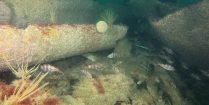
Visiting Brest reveals an enticing world of scuba diving in France. With walls, wrecks and potential seal encounters, find out why people from all over are drawn to this area.
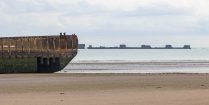
Rooted in history, you’d be hard-pressed to find a diving local that offers a better opportunity to witness World War II wrecks. Dive into the D-Day landing beaches of Normandy.
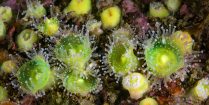
Who says cold water diving can’t be filled with color? Plunge into Carnac, France and explore the bountiful anemone gardens, intricate macro life, and delicate fragility below the surface.

Beneath the waters of the Gulf of Naples are the remains of an ancient Roman civilization lost to the seas of time and guess what? You can dive into it!
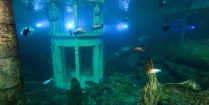
Bask in warm water bliss as you explore the tropical dive facility of TODI. From pufferfish to piranha let the flurry of freshwater color envelop you.
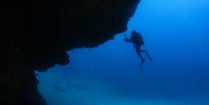
For fresh bubbles, magnificent viz and spectacular wildlife encounters, now is the perfect time to explore the volcanic island of Lanzarote.

Some people go to Brussels for the waffles, others go for the impressive architecture scene. Scuba divers go to Brussels to dive in the Nemo 33 indoor pool.
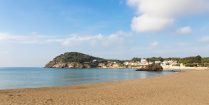
The Mediterranean oasis of Spain's Costa Brava is a delight for divers. With wreck dives, shore dives and wall dives just off the coast, to truly explore this destination you must take to the sea.
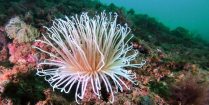
With thrilling shore dives, an amazingly sunny climate and marine animals coming from the Atlantic Ocean and Mediterranean sea, it's no wonder scuba divers are seduced by the underwater world of Costa del Sol.

The world knows the Netherlands for their windmills and clogs, but what is not as well known is the excellent shore diving in the southern province of Zeeland.
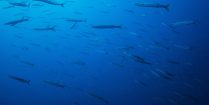
Italy is a cultural hub for art, history, dining and scuba diving. Dive the Amalfi coast and see some of the best-kept secrets of the Tyrrhenian Sea.
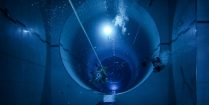
When in Italy make sure to stop at the world's deepest pool, Y-40 the Deep Joy and try your hand at scuba or freediving for a bucket list experience.
